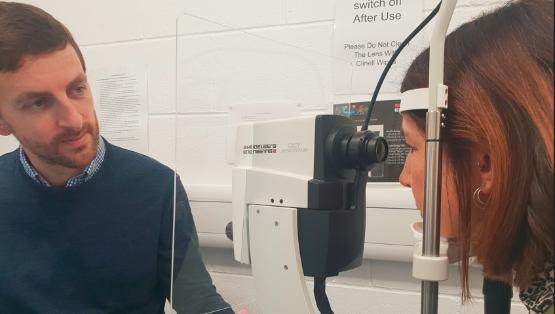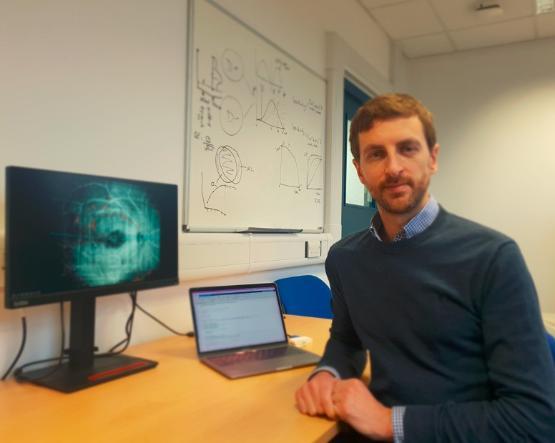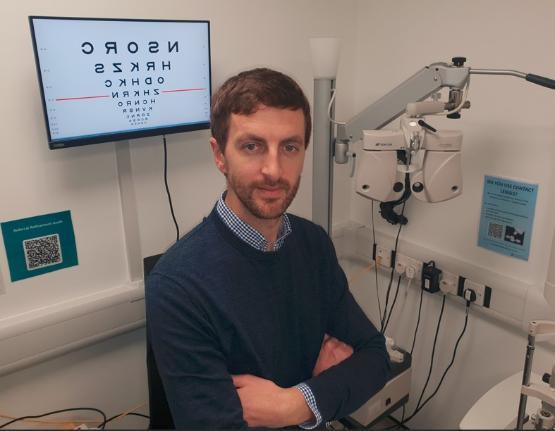£1.18 million glaucoma study will take a fresh look at retina scanning technology
A £1.18m University of Bradford project funded by the Medical Research Council could help improve diagnosis of glaucoma while reducing misdiagnosis rates.

Glaucoma is the world’s leading cause of irreversible blindness, affecting 3% of those aged over 40 in the UK. It is also becoming more common as the population ages, with 112 million people worldwide predicted to be affected by 2040.
Optometrist Dr Jonathan Denniss, an Associate Professor in the School of Optometry & Vision Science, said effective treatment of glaucoma required accurate early diagnosis and that current detection rates could be improved.

He said: “Existing diagnostic imaging for glaucoma uses optical coherence tomography (OCT) which is fast, non-invasive, and straightforward to use. However, glaucoma diagnosis is difficult and misidentification of healthy eyes as glaucoma is common, costing the NHS over £36 million per year. In addition, current techniques also miss 20-30% of true cases, contributing to preventable sight loss.”
Dr Denniss said the current approach to OCT focused on measuring the thinning of retinal tissue in cross-sectional (front-to-back) slices. The proposed new method works with existing equipment to create new 3D images that provide improved diagnostic information. Dr Denniss said a reduction in the number of false positives of just 5% would equate to a saving of around £1 million a year for the NHS.
He added: “When we tested it on a small group of patients, the technique detected more early defects than existing approaches. It also showed potential to reduce false positives, which means fewer people being referred for treatment unnecessarily.”

The four-year project is due to begin in April 2025 and will be supported by researcher Dr Riccardo Cheloni who conducted the initial work on the new technique during his PhD studies at the University of Bradford.
About the MRC
The Medical Research Council (MRC), part of UK Research and Innovation (UKRI), [SLMU1] is at the forefront of scientific discovery to improve human health. Founded in 1913 to tackle tuberculosis, the MRC now invests taxpayers’ money in some of the best medical research in the world across every area of health. Thirty-three MRC-funded researchers have won Nobel prizes in a wide range of disciplines, and MRC scientists have been behind such diverse discoveries as vitamins, the structure of DNA and the link between smoking and cancer, as well as achievements such as pioneering the use of randomised controlled trials, the invention of MRI scanning, and the development of a group of antibodies used in the making of some of the most successful drugs ever developed. Today, MRC-funded scientists tackle some of the greatest health problems facing humanity in the 21st century, from the rising tide of chronic diseases associated with ageing to the threats posed by rapidly mutating micro-organisms.
The funding for this project was awarded through the MRC Developmental Pathway Funding Scheme (DPFS), MRC’s core translational funding opportunity. DPFS provides funding to support academically-led projects that aim to drive innovative treatments, interventions or products along the developmental pathway to improve prevention, diagnosis, prognosis or treatment of significant health needs.
